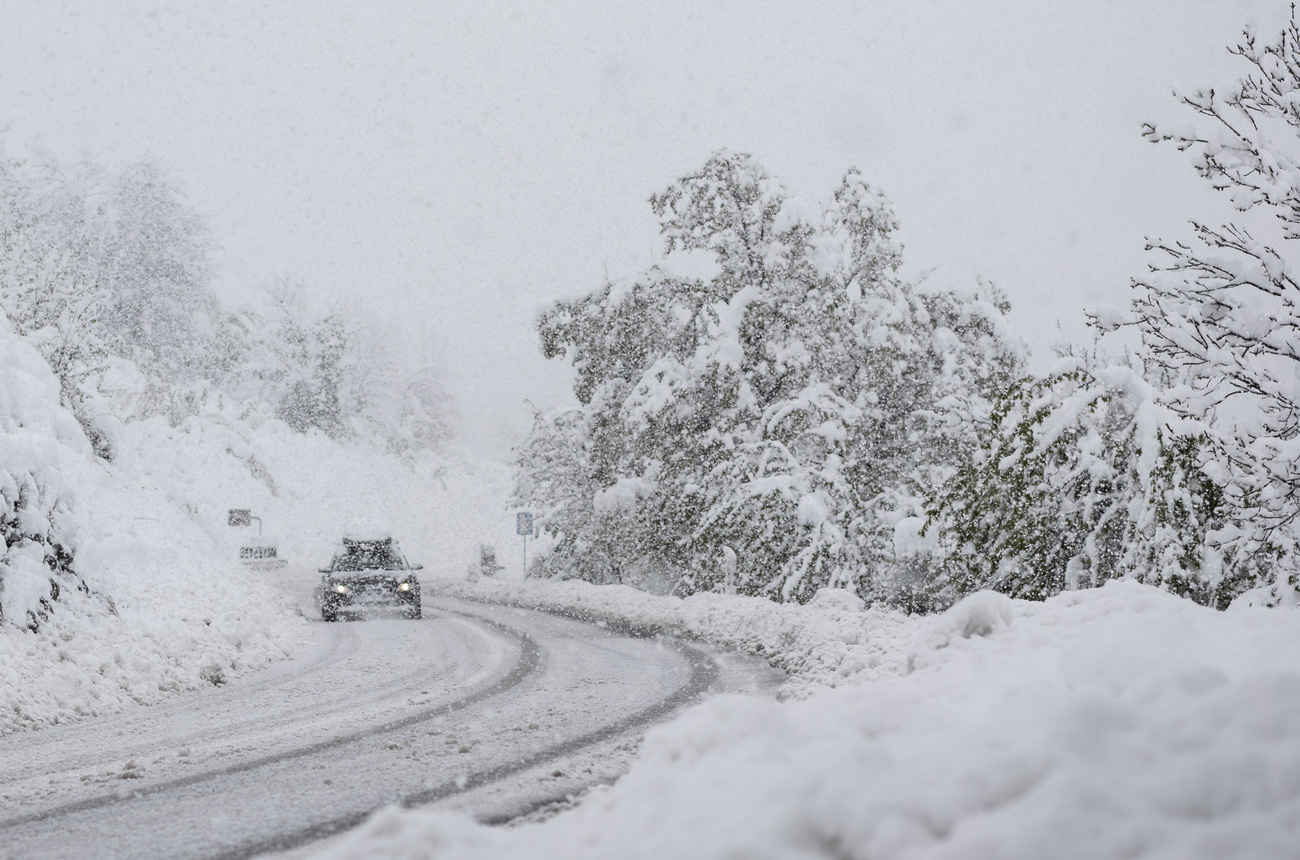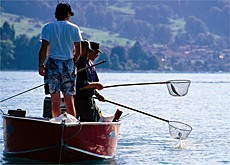Fears over dumped munitions in Lake Thun

Deformities in white fish from Lake Thun have raised concerns that the water in the lake may be seriously polluted.
One possible cause is some 3,000 tons of munitions, which were dumped into the lake by the Swiss army decades ago.
For the past three years, the fish have been showing changes in their reproductive organs.
Around 70 per cent of the fish are now showing abnormalities, and the scale and variation of the changes have never been seen anywhere else in the world.
Although no one can say for sure what is causing the changes in the fish, suspicion has fallen on the munitions strewn across the lake bed.
“The dumping of munitions took place between 1940 and 1963,” Hans Stücki of the defence department told swissinfo. “There was no law at the time to prevent this.”
Altogether 3,000 tons of ammunition were dumped into the lake, including shells, fuses, and large bombs.
“But no chemical or radioactive munitions were dumped,” Stücki said.
Local concern
Out on his boat on the lake, Alex Schwab, a keen fisherman, is angry that one of Switzerland’s most beautiful regions should have been used as a dumping ground in this way.
“I’m amazed that in the 1940s there wasn’t more environmental awareness,” Schwab told swissinfo. “If a private company had done something like that the state would have come down on them like a ton of bricks.”
Schwab’s anger is echoed by other local fishermen trying their luck out on the lake. “It’s scandalous,” said one. “If we so much as dump a few fish guts into the lake we get fined, but the army can get away with this.”
“I think they should bring all the munitions up again.”
Cost and difficulty
Raising 3,000 tons of ageing munitions from the lake floor is not an option, though. The reason it was considered safe to dump there in the first place was because Lake Thun is so deep; the munitions are 214 metres below the surface.
“Of course it would be better to get the munitions out,” Stücki admitted. “But who would pay for that? It would cost hundreds of millions of francs.”
Instead, the defence ministry is undertaking a five-year study, together with Bern’s cantonal water protection and fishery departments, to establish exactly what is causing the changes in the fish.
“I was astonished when I saw the deformities in the fish,” Peter Friedli of the cantonal fishery department told swissinfo. “We have been checking on the white fish for years and never saw anything like it until recently.
“I am very concerned. The health of the fish is an indicator of the health of the environment.”
Water for thousands
What concerns Friedli and his colleague Ueli Ochsenbein of the water protection office most of all is that, if the water in Lake Thun is contaminated, there may be more at stake than just the health of the fish.
“The lake of Thun is extremely important for the people in Bern,” Ochsenbein told swissinfo. “It supplies water to the river Aare, and hundreds of thousands of people get their drinking water from there.”
“In effect, we drink water from lake Thun, so any pollution could have a huge significance.”
However, Ochsenbein maintains that the water remains perfectly safe to drink, and the fish safe to eat.
“There’s no reason to worry about drinking the water at the moment,” he said. “We assume that if there is a leakage of chemicals into the lake, the concentrations in the water will be very small.”
But both men admit that establishing the causes of the changes in the fish is like looking for a needle in a haystack, and that much detailed research work lies ahead.
swissinfo, Imogen Foulkes in Thun
Fish from Lake Thun have been showing up with deformities since 2000 – around 70% of the lake’s white fish are affected.
Between 1947 and 1963, the Swiss army dumped 3,000 tons of munitions in Lake Thun, over an area of four square kilometres.
A five-year research programme will begin to establish exactly what is causing the changes in the fish.
Lake Thun supplies several hundred thousand people in canton Bern with drinking water.
Water and fish experts maintain that the changes in the fish, and the possible contamination of the water, pose absolutely no threat to human health.

In compliance with the JTI standards
More: SWI swissinfo.ch certified by the Journalism Trust Initiative









You can find an overview of ongoing debates with our journalists here . Please join us!
If you want to start a conversation about a topic raised in this article or want to report factual errors, email us at english@swissinfo.ch.